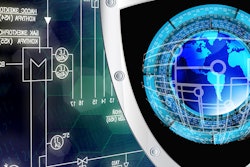JETS sked
PRESS RELEASE
October 14, 2016
MARYIN HEINRICH
REP
HOUSE
KIRTLAND LANDS MAJOR LASER PROJECT FOR FIGHTER JETS
CQ-Roll Call, Inc.
1255 22nd Street N.W.
Washington, D.C. 20037
Transcript/Programming: Tel. 301-731-1728
Sales: Tel. 202-419-8500 ext 599
www.cqrollcall.com
CQ-Roll Call, Inc.
is a private firm not affiliated with the U.S. Government.
Copyright 2016 by CQ-Roll Call, Inc.
Washington, D.C. U.S.A. All materials herein are protected by United States copyright law
and may not be reproduced, distributed, transmitted, displayed,
published or broadcast without the prior written permission of
CQ-Roll Call, Inc. You may not alter or remove any trademark,
copyright or other notice from copies of the content.
For Immediate Release
Kirtland lands major laser project for fighter jets
October 14, 2016
When laser-equipped fighter jets hit the skies in the 2020s, they`ll include a lot of ``Made in New Mexico`` technology.
The Air Force Research Laboratory at Kirtland Air Force Base is overseeing the government`s new fighter jet demonstration project known as SHiELD, or Self-Protect High Energy Laser Demonstrator. The program aims to place small-scale laser pod defense systems on older military aircraft, with the first system demonstration scheduled for 2021.
To build it, the Air Force lab awarded an initial $39 million contract in late August to Northrop Grumman to create a new laser beam control system. Two more contracts will follow in the coming months, one for a laser pod that contains the system`s power, thermal management, battery and cooling technology, and another to develop the laser itself, said SHiELD program manager Richard Bagnell.
Northrop will manage the beam control research and development at a division in Redondo Beach, Calif., and at the AFRL`s directed- energy directorate in Albuquerque. The AFRL`s project team will oversee all contract work - including systems alignment, integration and testing - in New Mexico.
``Northrop will work out of Redondo Beach, but we have significant staff on the government side at Kirtland, plus contractors supporting it off base,`` Bagnell said. ``We expect testing eventually will be done at Kirtland and White Sands Missile Range, because we have the infrastructure here to effect the best test we can.``
The project`s total cost is not yet known, but the upcoming pod contract will be for about $40 million. In addition, the AFRL expects to spend $25 million to $50 million over the next five years on local contractors.
Once fully built, the pod-based laser system would be mounted on the outside of aircraft. The Air Force has not yet identified which planes would get the system or which targets it would be used against. But it would, at least at first, be used for defensive purposes, such as shooting down incoming air-to-air missiles.
It`s part of a broad Department of Defense effort to incorporate laser systems for defensive and offensive purposes on ground, maritime and air vehicles, said Shaun McDougal, Forecast International`s North America military market analyst.
``It`s a growing area of interest for all the services,`` McDougal said.
Separate programs are underway to mount lasers on armored trucks and Navy ships. Boeing Co. has contracts for a lot of that work, much of which is at its facility in Albuquerque.
Mounting lasers on aircraft can, however, offer many tactical advantages.
For one, it gives weapons operators a better line of sight to see targets over hills and buildings compared with ground-based lasers, McDougal said. It`s cheaper than conventional weapons and offers unlimited fire power, with no need to land and reload.
SHiELD is one of the first major efforts to build scalable laser systems for fighter jets since the massive Airborne Laser Program ended in 2011. That project, also headed by Boeing at a cost of $5 billion over 15 years, aimed to mount a chemical laser on a Boeing 747.
That program successfully demonstrated basic laser technology, but funding ended, in large part because the system was huge, difficult to manage and expensive.
SHiELD will build on lessons from the Airborne Laser Program and other projects, Bagnell said. In particular, it will use electronic lasers that can be designed to occupy much less space.
``We want it to be compact with the right size, weight and power to fit inside a pod on potentially any aircraft,`` Bagnell said.
Northrop Grumman will focus on building a robust beam control system to withstand extreme turbulence on aircraft, which can affect laser accuracy. The beam control, pod and laser components will be built simultaneously, and then later integrated for full system testing within five years.
``This investment is another example of the military`s growing appreciation for directed energy and the game-changing potential for our national security,`` said Sen. Martin Heinrich, D-N.M. ``New Mexico is home to AFRL and a number of industry leaders who are working to develop and deploy this technology.``






















